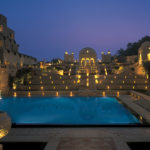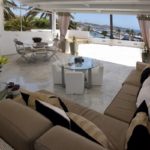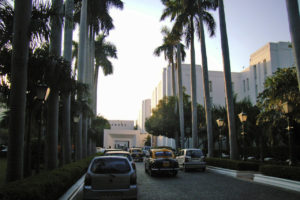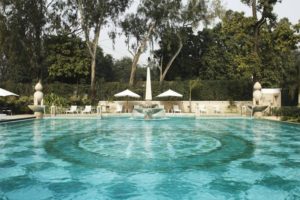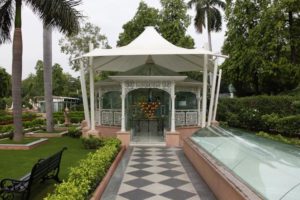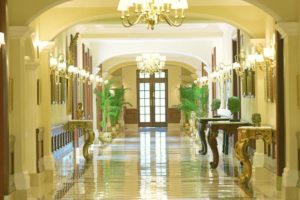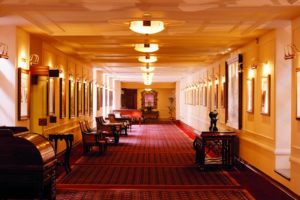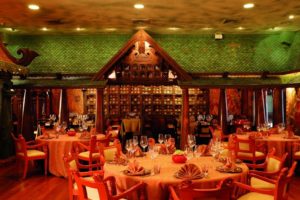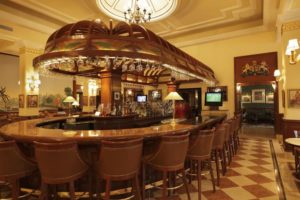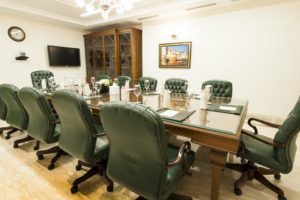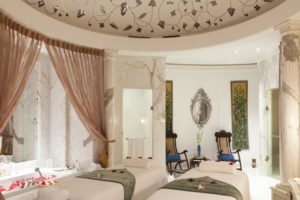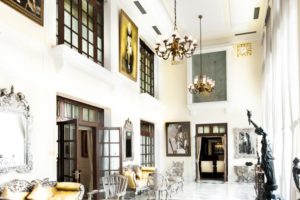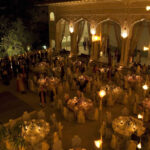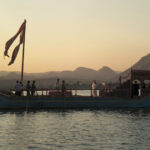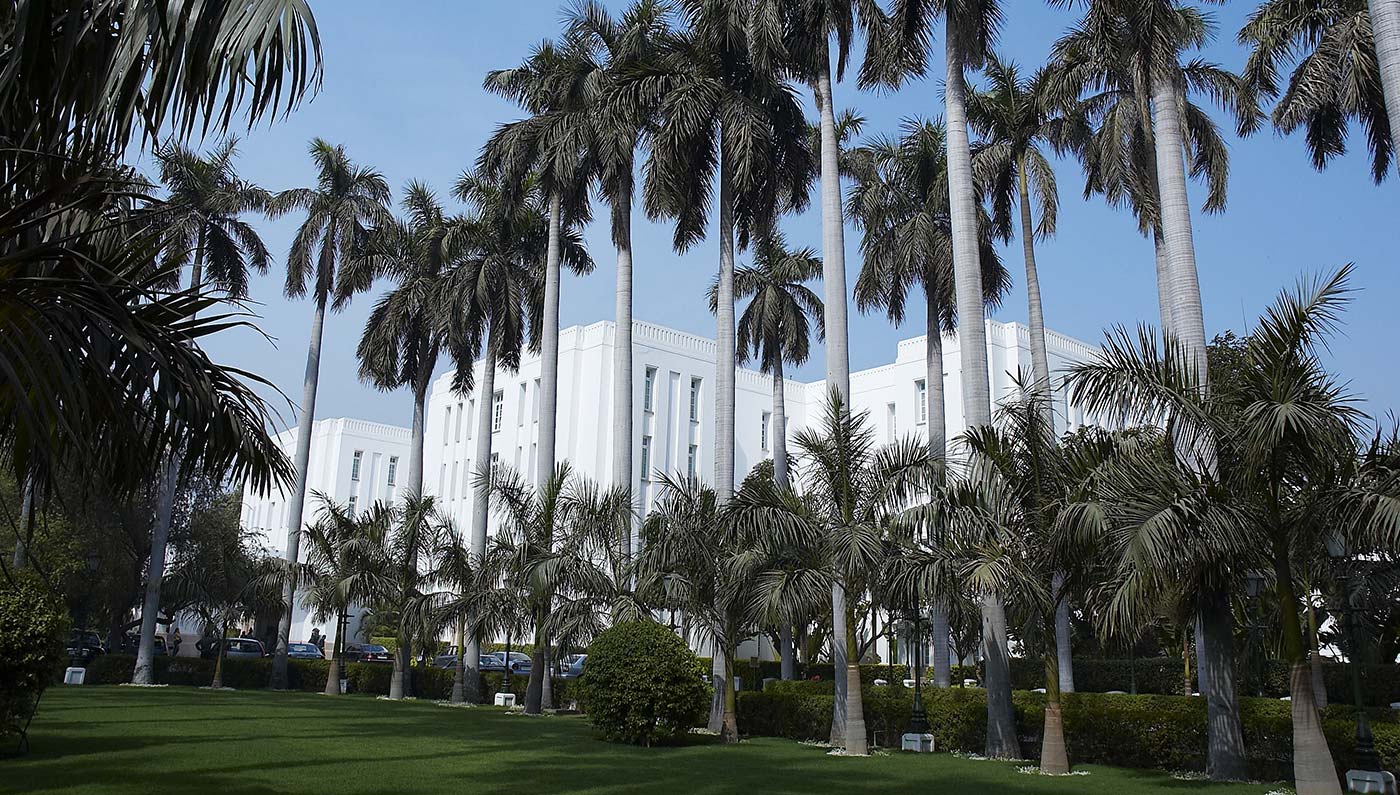
The Imperial Hotel 5*****, New Delhi
The Environment Built in 1931 by Blomfield,one of Sir Edwin Lutyen’s associates, and inaugurated by Lord Willingdon in 1936, the Hotel is known for its contemporary colonial style. As New Delhi’s landmark Hotel, it is located on Janpath, the erstwhile Queensway, steps away from the renowned shopping district and major attractions of the city. Awash in white, The Imperial Hotel is a blend of old and new, having preserved its past aura to provide its guests with a lifetime of memories. It is a mélange of Victorian, colonial and art deco styles in its interiors. The atmosphere is unique!
How you will reside A total of 233 guest rooms including 43 suites, each with a distinct interior overlooking the lush, verdant gardens. All rooms offer total privacy; designed suites, some with an area of 850 sq. ft. and above, making them easily, one of the largest in India. All rooms have views ranging from the airy Atrium to the swimming pool, well-manicured, lush green gardens, royal palms to the Terrace garden and The Spice Route Courtyard, where the latter two embody outstanding facets of south–east Asian design; non-smoking floors; all rooms and suites have Porthault linen, specially imported from France; Lalique lights on the ceiling and in the pathways; Bang & Olufsen and Hitachi television sets. Special for women The hotel, recently launched a landmark initiative aimed squarely at that category. Dubbed ‘Eliza’, the hotel has set aside a 12-room wing specifically for single women, located on the quiet third floor. The hotel has boosted security measures for those rooms and equipped them with special feminine touches like manicure sets, cosmetics, flowers and women’s-sized bathrobes, and outfitted the spaces with lots of pink. Staff servicing the rooms, from room service delivery to butlers, are all female. The Imperial estimates that five percent of its clientele are lone women, mostly business travelers from Europe and the United States, and this segment is growing.
How you will eat The Verandah of 1911, popularly known as ‘The Garden Party’, overlooks a large expanse of l gardens; the patio and the garden are open during fine weather for an alfresco dining experience. The 1911 Bar is a setting used from a business pow – wow to an informal evening. You can also luxuriate in the privacy of its exclusive adjoining lounges called the ‘Hardinge Room’ and ‘Lutyens’ & Baker Room’. The 1911 Bar is stocked with more than 500 varieties of wines, liquors and spirits. Daniell’s Tavern traces a culinary journey in the footsteps of Thomas and William Daniell – the famous landscape painters who arrived in India in 1786 to paint its unrivalled scenery. San Gimignano, inspired by the medieval town of the same name, in the heart of Tuscany in central Italy, is the Imperial’s specialty Italian restaurant. The Restaurant’s truly gourmet fare is accentuated by the culinary tradition and vitality of the Tuscan landscape reflected in the décor and the interiors. The private garden, more popularly known as ‘Paradiso DiVino’ offers a dining experience during fair climatic conditions. Patiala Peg, embodying the spirit of victory and one-upmanship, commemorates the Maharaja of Patiala’s team’s victory over the Viceroy’s, in a robust game of tent pegging in the early 1900s. The Atrium with its high-domed ceiling, tropical surroundings and humming fountains creates just the atmosphere for a traditional English afternoon tea. The Spice route, the most famous restaurant in Delhi. Heralded as one of the top ten restaurants in the world by Condé Nast Traveler, The Spice Route is poetry in design. The renowned restaurant mesmerizes all your senses enrapturing you with its sensuous exotica. Designed by Rajeev Sethi, the celebrated cultural czar of India, The Spice Route reflects the journey of spices from the Malabar Coast in Kerala through Sri Lanka, Myanmar, Malaysia, and Indonesia to Thailand and Vietnam. The restaurant is an overwhelming visual depiction of the art and culture that travelled with the spices through these regions, presented in a folk, religious and cultural fantasy of the Orient. The Restaurant, that was seven years in the making, is completely hand painted with vegetable and flower dyes by mural painters brought in especially from a temple in Guruvayur in Kerala with a tradition dating back to 3000 years. Designed on the principles of Feng Shui, The Spice Route is a treasure trove of antiques and is divided into nine different sections, each depicting part of the journey of life. Besides the stunning décor, The Spice Route boasts a menu that ensnares the taste buds of a seasoned food connoisseur. The Spice Route Courtyard transports the guests to the wonderful world of Southeast Asia. Adorned with traditional Thai sculptures from the Chiang Mai region in northern Thailand, the Courtyard is a visual spectacle. A picture perfect water body with floating candles and thoughtfully strewn petals forms the center of the Courtyard. The far end of the pavilion has traditional Khantok seating for six under an Oriental Pagoda.
Amenities There is a 24 hour Business Centre, located on the first floor, offering many services; the hotel also hosts a book shop, located in the Lobby, offering a selection of international products, as well as toiletries, national and international newspapers and magazines Hairline, the beauty salon and barber shop located in the Lobby, offers complete salon services, including hair care, manicures, pedicures and stylized make up application.The Swimming Pool, dotted by the Royal Palms and nestled amongst the shaded grounds of the Hotel, offers a refreshing experience. A well-equipped Pool Bar serves snacks and drinks to the guests. The Hotel’s gardens present the backdrop for jogging and leisure walks.The recently launched Health & Racquet Club, located adjacent to the new Imperial Spa, provides state-of-the-art Cybex multi-station, a Pilates Reformer, a Kinesis Machine, lifecycles, treadmills, climber-stepper, cross trainer and bench press with television and channel music. The Health & Racquet Club also provides personal consultation for yoga sessions.
The wellness choice The Imperial Spa, offers exclusive environment of total well-being. It is a spread over an area of 16000 sq. feet having intricate architecture, highlighting the influences of Moghul era.
About people The imperial hotel is related to a part of history of the city as well as India. In 1911 King Emperor George V declared New Dehli as the capital of India and the hotel was built and run by S.B.S Ranjit Singh. From the time The Imperial opened its doors in the 1930s, when India was beginning to write the last chapters of its saga on independence, there was little space in New Delhi for an Indo- British rubbing of shoulders. The Imperial provided such a space. Pandit Nehru, Mahatama Gandhi, Muhammad Ali Jinnah and Lord Mountbatten would meet at The Imperial to discuss the partition of India and creation of Pakistan. The Imperial is a confluence of a rich historical past and contemporary international appeal. After many restorations, it has managed to preserve its charm, and exudes it’s former glory. The original Frasers and Daniells paintings and the tavern named after them, the symbolically baptized “1911” restaurant and bar, the Royal ballroom were the places where have met and are still as popular today. Presently the hotel is owned by Sardar Hardev Singh and Singh Akoi, grandsons of Ranjit. The 24 king palms that lead up to the porch are an integral part of and witness to the very creation of New Dehli.


